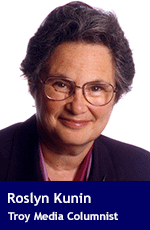 Road rage has almost become a defining characteristic of life in and around our cities. In the best of circumstances, it’s frustrating and time consuming to drive anywhere. Throw in bad weather, construction or an accident, and it becomes nearly impossible. Why can’t something be done so we can drive unimpeded on our roads?
Road rage has almost become a defining characteristic of life in and around our cities. In the best of circumstances, it’s frustrating and time consuming to drive anywhere. Throw in bad weather, construction or an accident, and it becomes nearly impossible. Why can’t something be done so we can drive unimpeded on our roads?
The very challenging task of relieving road congestion (and building and funding public and other means of transit) has been given to a mobility pricing commission set up by the Metro Vancouver mayors’ commission and TransLink, which is responsible for the transportation network in the region. They have their work cut out for them and deserve support.
But solutions are possible and can be found in the most unexpected places.
I recently spent a week in Dongguan, a Chinese city of eight million people in the province of Guangdong just inland of Hong Kong. When I first visited there in the 1980s, it was undeveloped. Peasant farmers lived in huts and there wasn’t enough electricity to consistently keep the lights on even in urban areas. Now power is widely and continuously available, cites glow with neon and no building is considered tall unless it exceeds 100 storeys. But what amazed me most were the roads.
I travelled extensively by car or van in and around the capital city, the smaller centres and the rural areas. The roads are impressive even in the more remote parts of the province. They’re all divided highways in excellent condition, with beautifully landscaped greenery in the medians and along the roadsides. No doubt these plantings conceal some of the less attractive parts of China but it made for pleasant journeys.
Adding even more pleasure to the travel was the fact that traffic was always moving – and at a good speed. This was surprising because Guangdong province has a population of more than 108 million people or roughly three times all of Canada. Trucks, of which we saw many, are a main means of transporting goods. And an increasing proportion of the population has access to a car – and the remainder aspire to own one.
One little hiccup in moving along the roadways and across the many bridges, in town and out, provided a clue to how Guangdong has solved its congestion problems. One regularly passed through and paid at toll booths. Someone has to pay for roads and who better that those using them?
Roads were built by major companies (in China it’s difficult to tell which are state firms and which are private) and those builders pay for their efforts by collecting tolls.
Attempts in Canada to use tolls on bridges and roads have often failed. This is because Canadians are rational. Given a choice between paying to use a road or bridge and using one that’s ‘free,’ even if it’s slower or out of the way, we choose the un-tolled route.
In Guangdong, alternative un-tolled routes either don’t exist or are so much worse that you wouldn’t send a truckload of goods or tourists on them.
In Metro Vancouver, we’re not going to destroy existing routes. Nor are we going to toll every kilometre of highway. But if we want to relieve congestion, we need to pay for it. User pay seems fair but only if the burden is widely shared. There have already been complaints that some communities have to pay bridge tolls while others don’t. The new B.C. government has promised to remove those tolls.
This introduces fairness, since no one has to pay. But it doesn’t generate any of the revenue needed to maintain and enhance our transportation system.
Equally fair would be tolls on all bridges. Because of the volume of traffic, the tolls wouldn’t have to be high to yield significant revenue. Special rates could be offered to frequent commuters and those of low income. Good public transit on bridge routes would offer people an alternative to taking cars and paying the tolls.
Let’s hope that the mobility pricing commission and the mayors’ council are brave enough to consider this. It won’t be politically popular in the short term. But the greater ease of movement created by using the toll dollars to improve roads and bridges will make the region a better place to live and road rage far less frequent.
Troy Media columnist Roslyn Kunin is a consulting economist and speaker.
The views, opinions and positions expressed by columnists and contributors are the author’s alone. They do not inherently or expressly reflect the views, opinions and/or positions of our publication.


